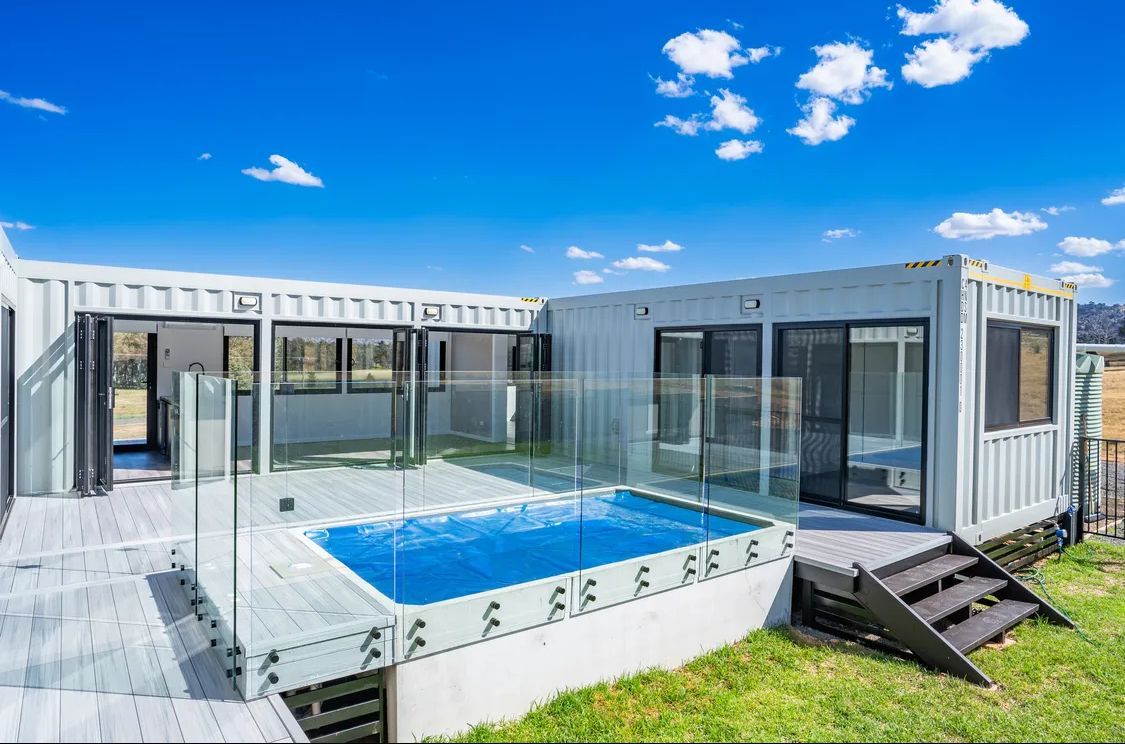Choosing the Right Air Conditioning System for Your Container Home
Keep Comfort Front of Mind

Container homes have taken off in popularity across Australia in recent years — and it’s easy to see why. They’re compact, customisable, and often more affordable than traditional builds. But one question tends to crop up once people move in: How do I keep this place comfortable in extreme weather?
Let’s explore the key things to consider when choosing an air con system that suits the unique nature of a container home, with Australia's climate and conditions in mind.
1. Start With Your Location
Before you even think about brands or unit sizes, consider where your container home is.
If you’re up in Cairns or Darwin, you’ll be focused mainly on cooling. Down in Hobart or the Victorian highlands? Heating might be more of a priority. And if you're somewhere in between — think Sydney, Adelaide or Perth — you’ll need something that handles both.
Australia’s climate varies wildly. A system that works brilliantly for someone in Townsville could be totally wrong for someone in Ballarat.
2. Think About the Layout and Size
Container homes are often small, sometimes a single 20-foot or 40-foot container, or a few joined together. That’s both a challenge and an advantage. The smaller the space, the less energy you’ll need to cool or heat it. But because the steel walls conduct heat and cold easily, the temperature inside can swing quite a bit.
That’s why insulation (which we’ll touch on later) and smart AC sizing are important. A unit that’s too big will cycle on and off frequently, wasting energy. One that’s too small won’t keep up in summer.
For a single-container home, a 2.5kW split system air conditioner usually does the job for cooling and heating a room around 25m². But it’s worth asking an installer to assess your exact setup — things like window size, sun exposure, and insulation all affect the load.
3. Air Conditioning Options for Container Homes
Here’s a look at a few systems that commonly suit container-style living.
Split System Air Conditioner (Reverse-Cycle)
This is the most common choice — and for good reason. A split system has an indoor unit mounted on the wall and a compressor unit outside. They’re relatively quiet, energy-efficient, and can handle both heating and cooling.
They work especially well in open-plan spaces. If you’ve got a standard single-container home or one with minimal dividing walls, a split system might be your best bet.
Wall or Window Box Unit
These are more old-school, but still used in some setups. They’re cheaper to install and don’t need much wall space, but they tend to be noisier and less efficient than split systems. They can suit a secondary room or be an option if you don’t want to mount an outdoor compressor.
Portable Air Conditioners
These can be useful in a pinch — say, if you’re renting or only living in the container temporarily — but they’re not great long-term. They use more power, take up precious floor space, and often struggle in extreme heat.
Ducted Systems
Ducted air con is usually overkill for container homes unless you’re working with multiple joined units or a custom build that mimics a full-sized house. Ducting also needs ceiling space — which container homes often don’t have.
4. Insulation: Don’t Skip It
You can’t talk about air conditioning in a container home without talking about insulation. The steel walls of a shipping container conduct heat and cold much faster than typical home materials. That means, without proper insulation, you’ll be fighting an uphill battle no matter what system you install.
Spray foam is a popular choice, as it adds insulation and also helps with moisture control. You could also consider insulated wall panels, reflective foil insulation, or combining materials for better thermal performance.
Good insulation reduces the size (and cost) of the air con system you’ll need — and lowers your energy bills in the long run.
5. How Much Power Do You Have?
This one’s especially important if your container home is off-grid or solar-powered. Air conditioners can chew through power, so look for high energy-star-rated units. Inverter technology is another plus — it allows the compressor to run more efficiently, maintaining a steady temperature without constantly turning on and off.
Also keep in mind the total power load of your home. If you’ve got solar panels, check that your system can handle the AC during peak summer afternoons or chilly winter nights.
6. Airflow and Ventilation
Container homes are often airtight, which helps with efficiency, but can cause problems with ventilation. Stale air, excess humidity and condensation can become issues, particularly in humid climates or during winter.
You might want to pair your air conditioning system with some form of ventilation. That could be as simple as ceiling fans, an exhaust fan in the bathroom, or adding trickle vents in your window frames. Some split systems also have built-in dehumidifiers or air purifiers, which can improve comfort and indoor air quality.
7. Noise Levels Matter in Small Spaces
In a compact home, even a quiet hum can become distracting. Always check the decibel rating of both the indoor and outdoor units. Many modern split systems now operate at around 30-40dB indoors — about as quiet as a whisper.
It’s also worth thinking about where the outdoor unit will go. If it’s mounted too close to a bedroom window or outdoor seating area, the compressor noise might become a nuisance.
8. Don’t Forget Installation Regulations
Air conditioning installations in Australia must be done by a licensed technician, especially for split systems, which involve refrigerant gas and electrical connections.
According to government regulations under the Ozone Protection and Synthetic Greenhouse Gas Management Act 1989, only certified installers can legally handle refrigerant gases used in AC systems. It’s also a good idea to check with your local council if you’re building off-grid or in a rural area — different rules can apply depending on where you are.
Keep Comfort Front of Mind
Living in a container home comes with plenty of perks — it’s efficient, compact and often more affordable than a standard house. But when it comes to climate control, you need to be thoughtful.
A well-chosen, energy-efficient air conditioning system — backed by good insulation and smart design — will keep your space comfortable no matter where in Australia you are. Whether you’re sweating it out in the Top End or warming up in the southern highlands, the right setup can make all the difference.
👉 Next Step:
- Book a free consultation call
- Download our Container Home Cost & Compliance Checklist (PDF)
- View completed projects




